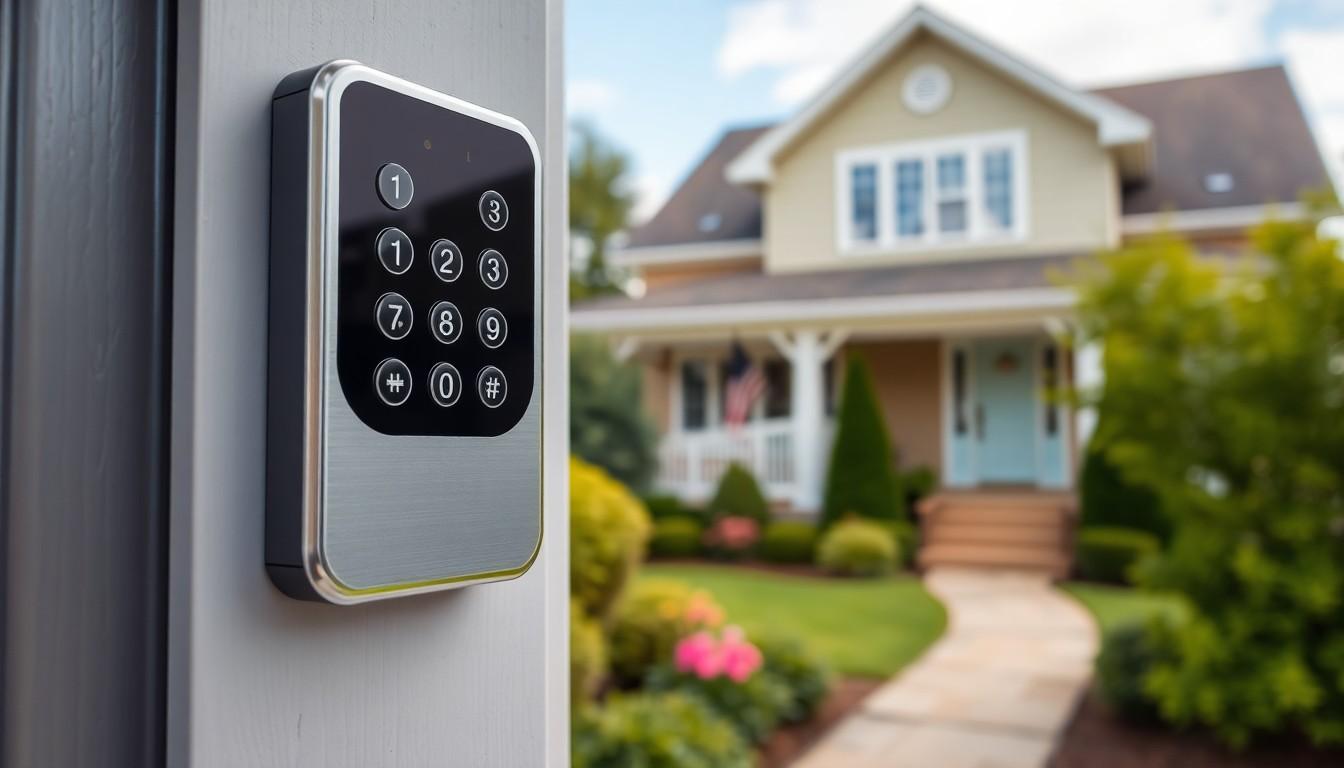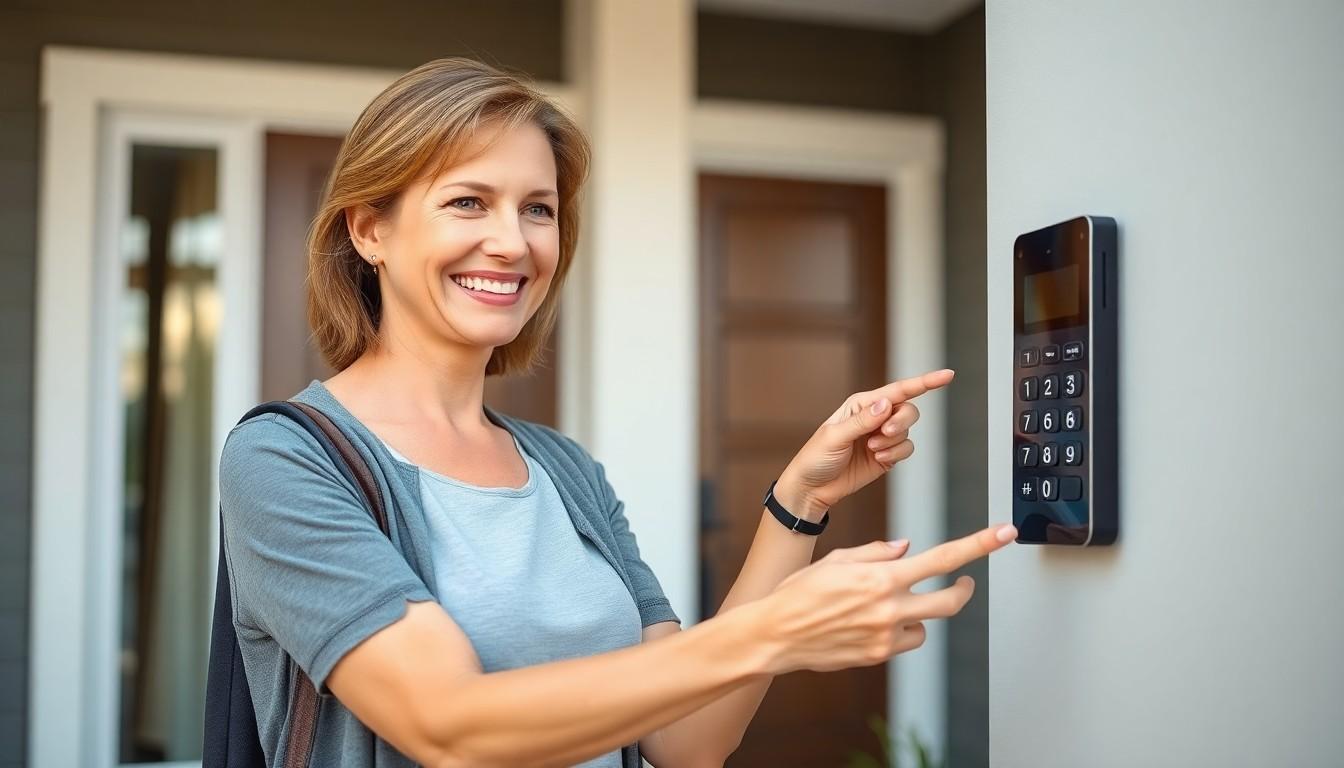Key Takeaways
- Understanding Clicker Keypads: Clicker keypad programming is crucial for enhancing security and convenience in both residential and commercial properties by allowing easy management of access codes.
- User-Friendly Features: Key features include user code setup, temporary access codes for guests, multiple user support, and the ability to change codes for improved security.
- Convenience and Accessibility: Programming is straightforward and does not require special skills, making it accessible for everyone while saving time and eliminating the need for physical keys.
- Enhanced Security Measures: Custom access codes and the ability to change them regularly significantly reduce unauthorized entry risks, thereby improving overall security.
- Diverse Keypad Types: Different types of keypads, including wireless, wired, smart, Bluetooth, and biometric options, cater to various user needs and technological preferences.
- Practical Applications: Clicker keypads are beneficial for both home security and business entry solutions, streamlining access management and reinforcing safety protocols.
In today’s high-tech world, clicker keypad programming has become an essential skill for many. Whether for home security systems or garage doors, these keypads offer convenience and enhanced control. Understanding how to program these devices can save time and eliminate frustration, making it a valuable asset for homeowners and businesses alike.
With the rise of smart technology, clicker keypads are more common than ever. They provide a seamless way to manage access to properties while ensuring safety. By mastering the programming process, users can customize settings to suit their needs, from setting unique codes to troubleshooting common issues. This article will guide readers through the basics of clicker keypad programming, empowering them to take full advantage of this handy technology.
Clicker Keypad Programming
Clicker keypad programming involves detailed steps to configure and customize keypads used in devices like garage door openers and security systems. This programming allows users to set their preferred codes, enabling secure and convenient access.
Key Features of Clicker Keypad Programming
- User Code Setup: Users can create unique access codes, ensuring personalized security.
- Temporary Access Codes: Users can generate temporary codes for guests or service personnel, enhancing flexibility.
- Multiple User Support: Systems support various user codes, accommodating multiple family members or employees.
- Code Change Process: Users can easily change codes to maintain security, especially after relocating or changing staff.
Benefits of Clicker Keypad Programming
- Enhanced Security: Personalized access codes reduce unauthorized entry risks.
- Convenience: Users gain quick access without needing physical keys, aligning with modern preferences.
- Ease of Use: Programming typically requires no special skills, making it accessible for all users.
- Problem-Solving: Understanding programming methods helps troubleshoot common issues effectively.
Common Programming Steps
- Locate the Programming Button: Devices usually have a dedicated programming button, essential for setup.
- Enter Existing Code: Inputting the current code allows users to gain access to programming features.
- Follow On-Screen Prompts: Users should follow displayed instructions, which guide code changes and additional settings.
- Test New Codes: After inputting new codes, testing ensures functionality and reliability.
Understanding clicker keypad programming empowers users, enhancing their home or business security through smarter technology use.
Benefits of Clicker Keypad Programming


Clicker keypad programming offers several advantages, making it an essential feature for modern convenience and security. Below are the key benefits associated with using clicker keypads.
Convenience and Ease of Use
Convenience significantly improves when utilizing clicker keypads. Users can easily program multiple access codes for family members or employees, simplifying access management. Fast entry and exit from properties enhance the overall user experience. Streamlined installation processes eliminate the need for professional assistance, saving time and money. Additionally, programming can typically be done through on-screen prompts, making it user-friendly for individuals of all technical backgrounds.
Enhanced Security Features
Enhanced security becomes a primary benefit with clicker keypad programming. Unique access codes provide superior protection against unauthorized entry, ensuring only designated individuals can access facilities. Temporary access codes allow homeowners to grant limited access to guests or service providers without compromising primary security codes. Multi-user capabilities mean that various users can maintain individualized codes, aiding in accountability and monitoring. Regular code updates further bolster security, helping prevent the risk associated with stolen or shared codes.
Types of Clicker Keypads
Clicker keypads come in various types, each with distinct features and functionalities. Understanding the differences aids in selecting the right model for specific needs.
Wireless vs. Wired Keypads
- Wireless Keypads: Wireless keypads operate through radio frequency signals, eliminating the need for hard wiring. Installation proves straightforward, as users can position these devices anywhere within a specified range. They typically require batteries, which necessitates regular replacements for continued functionality.
- Wired Keypads: Wired keypads connect directly to the security system using physical wiring. These models usually offer increased reliability, as they don’t rely on battery power. Installation may involve more complexity, with users needing to secure proper connections to avoid operational issues.
Smart Keypads
- Smart Keypads: Smart keypads integrate with home automation systems, allowing for remote access via mobile apps. Users can manage access codes and monitor entry attempts from their devices. These keypads offer additional features, such as alerts and user activity logs, enhancing overall security efficiency.
- Bluetooth Keypads: Bluetooth keypads facilitate secure connections with nearby devices. Users can unlock doors or access systems within a limited range through the Bluetooth feature. This design enhances convenience, as individuals can use their smartphones for entry without needing a physical key or code.
- Biometric Keypads: Biometric keypads use fingerprint or facial recognition technology for access. These keypads enhance security by allowing only authorized users entry, effectively preventing unauthorized access. Users find these models particularly beneficial in high-security environments, where traditional codes may not suffice.
Programming Process
Programming a clicker keypad involves a series of straightforward steps. Following these steps carefully ensures a successful setup and optimal performance of the device.
Step-by-Step Guide
- Locate the Programming Button: Identify the programming button on the keypad or receiver. It is usually marked clearly and may be found on the back of the device.
- Enter Existing Code: Input the current user code to access the programming mode. Ensure the code entered is correct to avoid system errors.
- Follow On-Screen Prompts: Pay attention to any on-screen instructions or indicator lights that guide the programming process. These prompts typically include options to add, edit, or delete user codes.
- Set User Codes: Enter new user codes as needed. Make sure they meet any specified length or complexity requirements for security purposes.
- Test New Codes: After programming, test all new codes to verify they function correctly. This step confirms successful programming and ensures security devices operate as intended.
- Save Changes: Complete the programming process by saving all changes. Wait for the device to confirm that it has stored the new settings, often indicated by a sound or light signal.
Common Troubleshooting Tips
- Reset the Keypad: If programming fails, try resetting the keypad to factory settings. This process usually involves pressing the programming button for a specific duration.
- Check Batteries: Ensure that the keypad batteries are installed correctly, charged, and functioning. Low battery power can interfere with programming and operation.
- Re-enter Existing Code: If the keypad rejects new codes, re-enter the existing user code accurately before attempting to input new codes.
- Review User Code Limits: Verify the number of user codes allowed by the device. Some keypads have a maximum limit that could prevent adding additional codes.
- Consult the Manual: Refer to the user manual for device-specific instructions. Manuals often provide solutions for common issues and detailed programming steps.
- Contact Support: For persistent problems, consider reaching out to customer support for further troubleshooting and assistance.
Applications of Clicker Keypad Programming
Clicker keypad programming offers various applications that enhance security and convenience for both residential and business settings. Users can effectively utilize these devices to control access, streamline operations, and improve overall safety.
Home Security Systems
Clicker keypads significantly boost home security systems by providing convenient access controls. Users can easily program unique codes for family members, enhancing security through personalized access. Temporary codes allow guests to enter without sharing permanent keys, adding flexibility for visitors. Additionally, the ability to change codes frequently minimizes unauthorized access risks, ensuring homes remain secure. Keypads can also integrate with home automation systems, allowing remote monitoring and control, which heightens security and peace of mind.
Business Entry Solutions
Clicker keypads serve as efficient entry solutions for businesses, allowing controlled access to facilities and sensitive areas. Businesses can assign different access codes to staff based on their roles, enhancing security while simplifying employee management. Temporary codes can facilitate access for contractors or visitors without compromising permanent security measures. Multi-user capabilities permit seamless code management for larger teams, while regular code updates help prevent unauthorized access. Integrating clicker keypads into business security systems streamlines entry processes and reinforces overall security strategies.
Clicker Keypad Programming
Mastering clicker keypad programming is essential for anyone looking to enhance their security systems. With the right knowledge, users can easily customize their access codes and troubleshoot issues that may arise. This not only saves time but also boosts overall security, making it a worthwhile investment for homes and businesses alike.
As smart technology continues to evolve, understanding these devices will empower users to take full advantage of their features. By staying informed about the different types of keypads and their programming processes, individuals can ensure their security measures are both effective and efficient. Embracing clicker keypad programming is a step toward a safer and more convenient environment.
